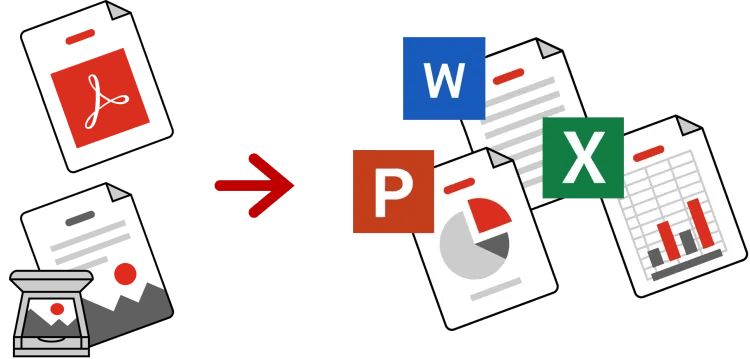Omniscien » Language Studio » Features » OCR »
Best in class AI driven optical character recognition and machine translation deliver
image conversions to MS Office formats. image tables into Excel. PDF conversions into Word. searchable PDFs. translated images and PDFs.
Overview
Integrate AI-powered OCR features into your applications via REST APIs, or use our friendly and easy to use portal interface to convert your images and PDF files into documents, text and data.

Keep original formatting and Styles
Convert PDF and Image Files into Microsoft Office
No Technical Know-how Needed. Anyone can convert their image or PDF to a Word file in an instant. No downloads, addons, extensions or add-ons.
Works with scanned images and Adobe PDF files.
Converts images within PDF files.
Retains the fonts, formatting and styles of the original.
Auto-detects document structure and table layouts.
Drag, Drop, Convert – Easy!!
Unmatched Accuracy and Formatting Control
Language Detection and Processing:
Auto-detect the document’s language or manually specify. Process multiple languages within a single document.
Processing Profiles:
Use pre-defined profiles with the most common settings or create your own custom settings and save the as a personal profile for later use.
Formatting Control:
Control a wide range for formatting documents specific to each output document type.
Processing Control:
Control how a document is analyzed and processed, whether to process images embedded inside PDFs, how to detect and process tables, how to process fonts, how which parts of a page are processed, and which advanced image pre-processing features to utilize.
Advanced Image Pre-processing:
Image pre-processing increases the recognition accuracy by optimizing the image for OCR. Even low-quality images can deliver the best OCR results after de-skewing, rotation, distortion correction, text line straightening, page splitting, adaptive binarization, ISO noise reduction and other automated image correction steps.
Also Available via REST API:
With power comes complexity. All configuration settings can be passed via REST API. However, we have made this simple and easy. Simply set up a profile and pass the Profile ID via API.
Integrated with Translation:
Convert images and PDF files and translate them at the same time.
Benefits
Fast and Powerful
With 210 languages supported, Language Studio covers most of the world’s languages that are used for digital data processing.
Using Language Studio’s flexible and scalable architecture enables the leveraging multi-core CPUs and processing images in parallel on multiple threads, significantly increasing processing speeds.
Processing images, scans and PDF files into a variety of output formats. Further use Language Studio’s document conversion features to convert files into more than 130 different file formats.
You can even convert existing PDF files into searchable PDF and PDF/A formats by adding the missing text layer, while preserving the PDF properties. XML data can be extracted from imported PDF/A-3 files as well as inserted when saving to PDF/A-3 formats.
Advanced Image Processing and Document Layout Detection
Unmatched text recognition accuracy and document conversion capabilities virtually eliminate retyping and reformatting.
Artificial intelligence and machine learning enhance accuracy and document layout reconstruction. Document structure, formatting, fonts and font styles are automatically detected, including complex tables, even those without visible column borders to precisely re-create the original document.
Image pre-processing increases the recognition accuracy by optimizing the image for OCR. Even low-quality images can deliver best OCR results after de-skewing, rotation, distortion correction, text line straightening, page splitting, adaptive binarization, ISO noise reduction and other image correction steps.
Secure and Private
You can’t protect your data if you don’t know where it is!
Retain control of your sensitive data by always keeping it within your own organizations network.
By using untrusted websites and internet services like Google Translate and Microsoft Translator to translate content your users are putting your sensitive data at risk. Legal rights are inadvertently lost to untrusted third parties who may use your sensitive data and your valuable intellectual property for their own purposes, including in some cases selling it to others.
Common OCR Activities
OCR technology and OCR software have a wide range of use cases. The list below is an example of some of the uses for Optical Character Recognition software:
- Convert an image file into data formats such as text, XML, JSON or CSV.
- Convert scanned documents into Microsoft Word, Microsoft Excel or Microsoft Powerpoint.
- Extract a table from an image into an Excel spreadsheet.
- Converting an image-only Adobe PDF file to a searchable PDF file by adding a text layer. This layer can be searched within document management systems.







